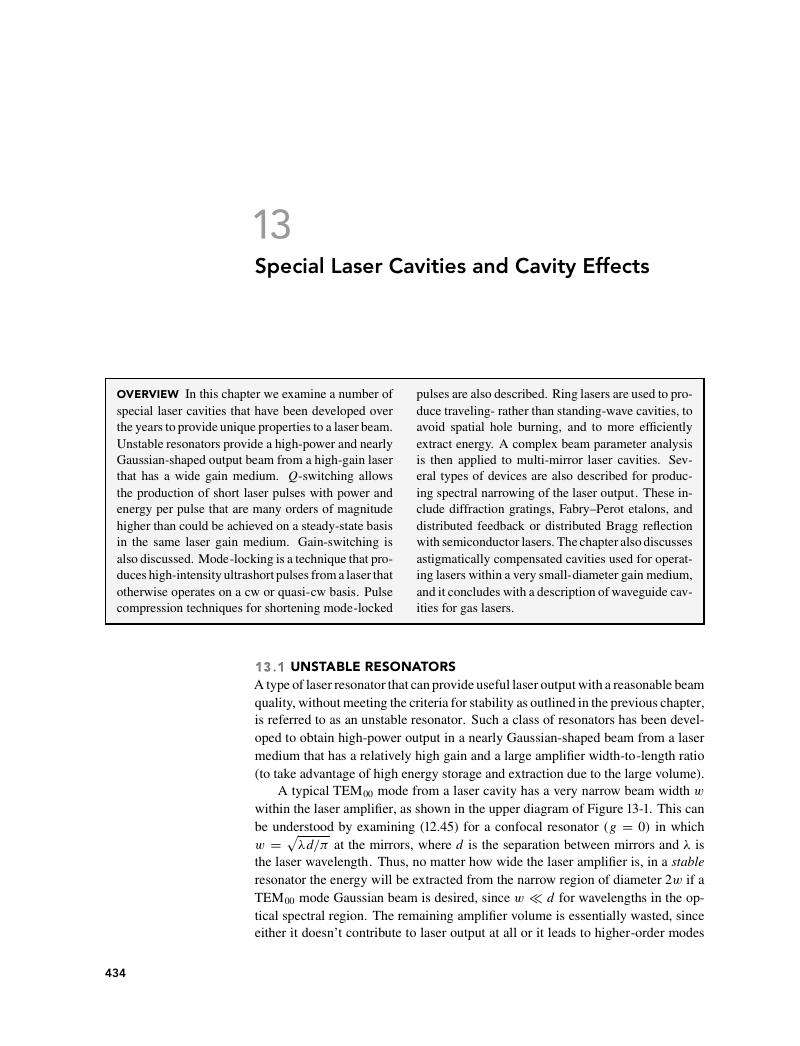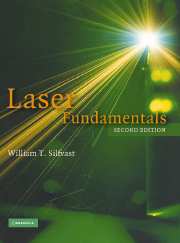Book contents
- Frontmatter
- Contents
- Preface to the Second Edition
- Preface to the First Edition
- Acknowledgments
- 1 INTRODUCTION
- SECTION 1 FUNDAMENTAL WAVE PROPERTIES OF LIGHT
- SECTION 2 FUNDAMENTAL QUANTUM PROPERTIES OF LIGHT
- SECTION 3 LASER AMPLIFIERS
- SECTION 4 LASER RESONATORS
- 11 LASER CAVITY MODES
- 12 STABLE LASER RESONATORS AND GAUSSIAN BEAMS
- 13 SPECIAL LASER CAVITIES AND CAVITY EFFECTS
- SECTION 5 SPECIFIC LASER SYSTEMS
- SECTION 6 FREQUENCY MULTIPLICATION OF LASER BEAMS
- Appendix
- Index
- References
13 - SPECIAL LASER CAVITIES AND CAVITY EFFECTS
Published online by Cambridge University Press: 05 June 2012
- Frontmatter
- Contents
- Preface to the Second Edition
- Preface to the First Edition
- Acknowledgments
- 1 INTRODUCTION
- SECTION 1 FUNDAMENTAL WAVE PROPERTIES OF LIGHT
- SECTION 2 FUNDAMENTAL QUANTUM PROPERTIES OF LIGHT
- SECTION 3 LASER AMPLIFIERS
- SECTION 4 LASER RESONATORS
- 11 LASER CAVITY MODES
- 12 STABLE LASER RESONATORS AND GAUSSIAN BEAMS
- 13 SPECIAL LASER CAVITIES AND CAVITY EFFECTS
- SECTION 5 SPECIFIC LASER SYSTEMS
- SECTION 6 FREQUENCY MULTIPLICATION OF LASER BEAMS
- Appendix
- Index
- References
Summary

- Type
- Chapter
- Information
- Laser Fundamentals , pp. 434 - 488Publisher: Cambridge University PressPrint publication year: 2004



